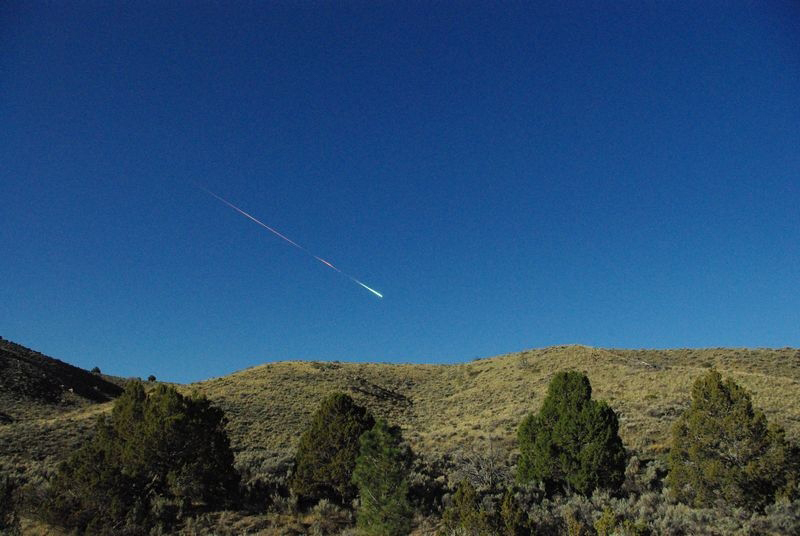RENO, Nev. – Tiny meteorites found in the Sierra foothills of Northern California likely were part of a giant fireball that exploded in daylight with about one-third the explosive force of the bomb dropped on Hiroshima at the end of World War II, scientists said Wednesday.
The rocks each weighed about 10 grams, or the weight of two nickels, said John T. Wasson, a longtime professor and expert in meteorites at UCLA’s Institute of Geophysics and Planetary Physics.
Experts say the flaming meteor entered the Earth’s atmosphere with a loud boom about 8 a.m. Sunday. It was seen from Sacramento, Calif., to Las Vegas and parts of northern Nevada.
The fireball was probably the size of a minivan weighing about 154,300 pounds, estimated Bill Cooke, a specialist in meteors at NASA’s Marshall Space Flight Center in Huntsville, Ala.
At the time of disintegration, he said, it probably released energy equivalent to a 5-kiloton explosion. The nuclear bomb dropped on Hiroshima was 15 kilotons.
The boom, an expert said, was caused by the speed with which the space rock entered the atmosphere. Meteorites enter Earth’s upper atmosphere at 22,000 to 44,000 miles per hour — faster than the speed of sound, thus creating a sonic boom.
The friction between the rock and the air is so intense that “it doesn’t even burn it up, it vaporizes,” said Tim Spahr, director of the Minor Planet Center at Harvard University.
An event of this size might happen once a year around the world, said Don Yeomans of NASA’s Near-Earth Object Program Office at the Jet Propulsion Laboratory in Pasadena, Calif. “But most of them occur over the ocean or an uninhabited area, so getting to see one is something special,” Yeomans said.
“Most meteors you see in the night’s sky are the size of tiny stones or even grains of sand, and their trail lasts all of a second or two,” he said.
Wasson told the AP that one meteorite was found near the town of Coloma, about 35 miles northeast of Sacramento, and another was discovered to the west near Lotus. He said they were located by collectors who were knowledgeable, but he did not identify them.
“I’m sure more will be found, I’m hoping including some fairly big pieces,” said Wasson. “The fact that two pieces already have been found means one knows where to look.”
Send questions/comments to the editors.



Success. Please wait for the page to reload. If the page does not reload within 5 seconds, please refresh the page.
Enter your email and password to access comments.
Hi, to comment on stories you must . This profile is in addition to your subscription and website login.
Already have a commenting profile? .
Invalid username/password.
Please check your email to confirm and complete your registration.
Only subscribers are eligible to post comments. Please subscribe or login first for digital access. Here’s why.
Use the form below to reset your password. When you've submitted your account email, we will send an email with a reset code.